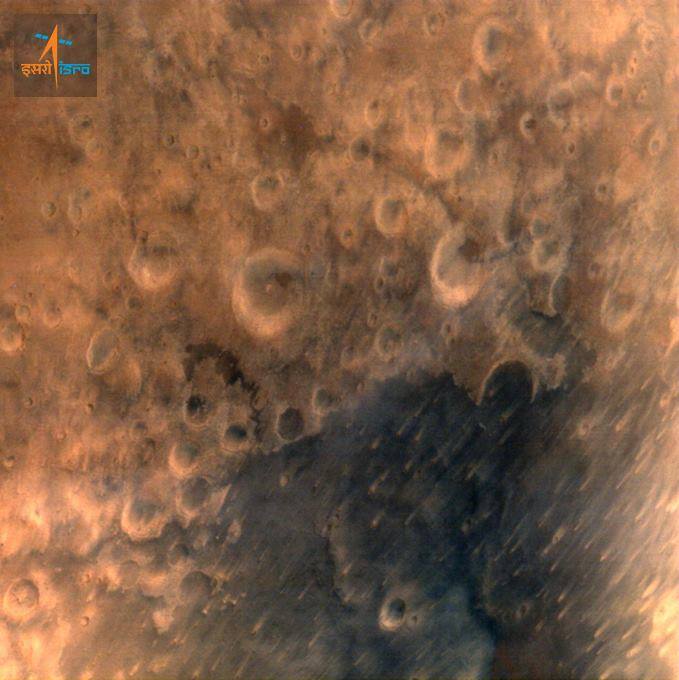Indian Space Research Organisation (ISRO) today on Twitter shared with the world the first images of the Red Planet as shot from the indigenous, low-cost Mars Orbiter Mission (MOM) spacecraft, a day after creating history by being the only such endeavor to have successfully reached Mars in its maiden attempt. This is what the tweet reads-

India now ranks among the elite three nations who have made their presence felt in Mars. Mangalyaan is now circling the red planet in an orbit whose periapsis (nearest point) to Mars is at 721.7km and apoapsis (farthest point) to the planet is at 76,993.6km. The inclination of orbit with respect to Mars’ equatorial plane is 150 degrees, just as intended. In this orbit, the spacecraft completes one round of Mars in 72 hours 51 minutes 51 seconds.
In the following weeks, the spacecraft shall be entirely tested in the Mars orbit, after which systematic observation of the planet using its five scientific instruments shall begin, and among those instruments feature a color camera, a thermal-imaging spectrometer to map the surface and mineral wealth of Mars, and a sensor to track marsh gas or methane. MOM seeks to study the Martian surface, its mineral composition, and scan its atmosphere for methane which is an indicator of life.
MOM, at a meager budget of Rs 450-crore, is the cheapest inter-planetary mission yet, and India is the first country ever to have reached Mars in a single attempt. MOM will continue in its elliptical path for at least six months, while the instruments equipped in it shall record and send their findings to Earth.
Indian Space Research Organisation (ISRO) today on Twitter shared with the world the first images of the Red Planet as shot from the indigenous, low-cost Mars Orbiter Mission (MOM) spacecraft, a day after creating history by being the only such endeavor to have successfully reached Mars in its maiden attempt. This is what the tweet reads-
India now ranks among the elite three nations who have made their presence felt in Mars. Mangalyaan is now circling the red planet in an orbit whose periapsis (nearest point) to Mars is at 721.7km and apoapsis (farthest point) to the planet is at 76,993.6km. The inclination of orbit with respect to Mars’ equatorial plane is 150 degrees, just as intended. In this orbit, the spacecraft completes one round of Mars in 72 hours 51 minutes 51 seconds.
In the following weeks, the spacecraft shall be entirely tested in the Mars orbit, after which systematic observation of the planet using its five scientific instruments shall begin, and among those instruments feature a color camera, a thermal-imaging spectrometer to map the surface and mineral wealth of Mars, and a sensor to track marsh gas or methane. MOM seeks to study the Martian surface, its mineral composition, and scan its atmosphere for methane which is an indicator of life.
MOM, at a meager budget of Rs 450-crore, is the cheapest inter-planetary mission yet, and India is the first country ever to have reached Mars in a single attempt. MOM will continue in its elliptical path for at least six months, while the instruments equipped in it shall record and send their findings to Earth.